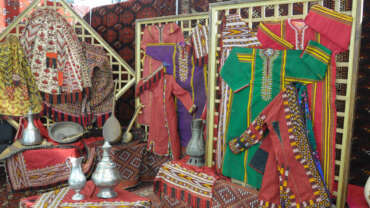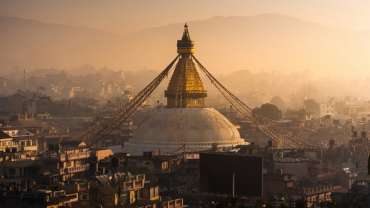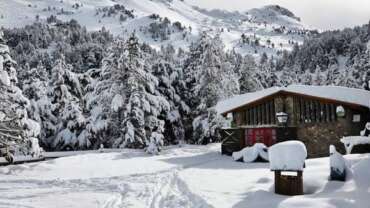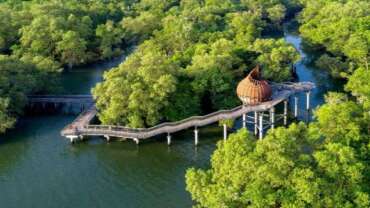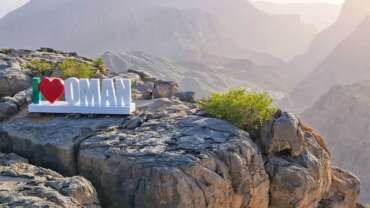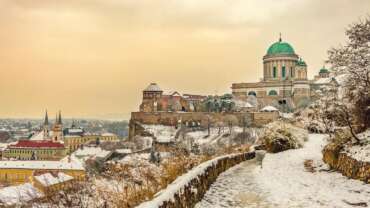Tanzania: Unsurpassed Africa
Tanzania is country so wealthy that it would practically take years to document all the resources. Not only is the country proud to bear witness to the highest and largest free standing mountain in the world but also to the rich and diverse wildlife concentrations, mineral and other resources available. If Africa’s tourism opportunities were to be summarized by one single country that country would be Tanzania.
It is an East African country known for its vast wilderness areas. They include the plains of Serengeti National Park, a safari mecca populated by the “big five” game (elephant, lion, leopard, buffalo, rhino), and Kilimanjaro National Park, home to Africa’s highest mountain. Offshore lie the tropical islands of Zanzibar, with Arabic influences, and Mafia, with a marine park home to whale sharks and coral reefs.
History of Tanzania
It is believed that modern humans originate from the rift valley region of East Africa, and as well as fossilized hominid remains, archaeologists have uncovered Africa’s oldest human settlement in Tanzania.
Early History
In 1959, Dr. L. S. B. Leakey, a British anthropologist, discovered at Olduvai Gorge in NE Tanzania the fossilized remains of what he called Homo habilis, who lived about 1.75 million years ago. Tanzania was later the site of Paleolithic cultures. By the beginning of the first millennium A.D. scattered parts of the country, including the coast, were thinly populated. At this time overseas trade seems to have been carried out between the coast and NE Africa, SW Asia, and India.
By about A.D. 900 traders from SW Asia and India had settled on the coast, exchanging cloth, beads, and metal goods for ivory. They also exported small numbers of Africans as slaves. By this time there were also commercial contacts with China, directly and via Sri Vijaya (see under Indonesia) and India. By about 1200, Kilwa Kisiwani (situated on an island) was a major trade center, handling gold exported from Sofala (on the coast of modern Mozambique) as well as goods (including ivory, beeswax, and animal skins) from the near interior of Tanzania. By about 1000 the migration of Bantu-speakers into the interior of Tanzania from the west and the south was well under way, and the population there had been greatly increased. The Bantu were organized in relatively small political units.
Foreign Contacts
In 1498, Vasco da Gama, the Portuguese explorer, became the first European to visit the Tanzanian coast; in 1502, on his second visit there, he made Kilwa tributary. In 1505, Kilwa was sacked by Francisco d’Almeida, another Portuguese explorer, and by 1506 Portugal controlled most of the coast of E Africa. The Portuguese did not cooperate with the local people, and their impact was mostly negative—trade was disrupted, towns declined, and people migrated from the region. However, Kilwa’s trade seems to have grown as a result of contact with the Portuguese. Toward the end of the 16th cent., the Zimba, a group from SE Africa, moved rapidly up the coast, causing considerable damage; in 1587 they sacked Kilwa and killed about 3,000 persons (roughly 40% of its inhabitants).
In 1698 the Portuguese were expelled from the E African coast (except for a brief return in 1725) with the help of Arabs from Oman. In the early 18th cent., the Omanis showed some interest in the commerce of E Africa, and this increased after the Bu Said dynasty replaced the Yarubi rulers in 1741. Oman’s commercial activity was centered on Zanzibar (and, to a lesser extent, at Mombasa), from which it controlled the overseas trade of E Africa. By the early 19th cent. numerous towns on the Tanzanian coast had been founded or revived; these included Tanga, Pangani, Bagamoyo, Kilwa Kivinje (situated on the mainland near Kilwa Kisiwani), Lindi, and Mikandani.
The Caravan Trade
Sayyid Said, the great Bu Saidi ruler, took a great interest in E Africa and in 1841 permanently moved his capital from Muscat, in Oman, to Zanzibar. He brought with him many Arabs, who settled in the mainland towns as well as on Zanzibar. About the same time, new caravan routes into the far interior were opened up; the three main lines went from Kilwa and Lindi to the Lake Nyasa region; from Bagamoyo and Mbwamaji (near present-day Dar-es-Salaam) to Tabora, where one branch continued west to Ujiji (and on into modern Congo) and another went north to the Victoria Nyanza region; and from Pangani and Tanga northwest into modern Kenya via Mt. Kilimanjaro.
The caravans following the southern route obtained mainly slaves and ivory; along the more northerly routes ivory was the chief commodity purchased. As a result, the Swahili language (a blend of Bantu grammar and a considerable Arabic vocabulary) and culture gained new adherents. In the middle third of the 19th cent. several European missionaries and explorers visited various parts of Tanzania, notably Mt. Kilimanjaro, Tabora, Lake Victoria, and Lake Nyasa. From the 1860s to the early 1880s Mirambo, a Nyamwezi, headed a large state that controlled much of the caravan trade of central and N Tanzania. About the same time Tippu Tib, a Zanzibari, organized large caravans that passed through Tanzania to present-day Zambia and Congo, where ivory and slaves were obtained.
Colonialism
As the scramble for African territory among the European powers intensified in the 1880s, Carl Peters and other members of the Society for German Colonization signed treaties with Africans (1884–85) in the hinterland of the Tanzanian coast. By an agreement with Great Britain in 1886, Germany established a vague sphere of influence over mainland Tanzania, except for a narrow strip of land along the coast that remained under the suzerainty of the sultan of Zanzibar, who leased it to the Germans. The German East Africa Company (founded 1887) governed the territory, called German East Africa. The company’s aggressive conduct resulted in a major resistance movement along the coast by Arabs, Swahili (whose main leaders were Abushiri and Bwana Heri), and other Africans that was only defeated with the help of the German government. A second Anglo-German agreement (1890) added Rwanda, Burundi, and other regions to German East Africa.
Because the company had proved to be an ineffective ruler, the German government in 1891 took over the country (which by then included the coast) and declared it a protectorate. However, it was not until 1898, with the death of the Hehe ruler, Mkwawa, who strongly opposed European rule, that the Germans succeeded in controlling the country. During the period 1905 to 1907 the Maji Maji revolt against German rule engulfed most of SE Tanzania; about 75,000 Africans lost their lives as a result of German military campaigns and lack of food. Under the Germans, several new crops (including sisal, cotton, and plantation-grown rubber) were introduced; the production and sale of other commodities (notably coffee, copra, sesame, and peanuts) was encouraged, and railroads were built to Kigoma on Lake Tanganyika and to Moshi. In addition, many new Christian missions, which included rudimentary schools for the Africans, were established.
During World War I, British and Belgian troops occupied (1916) most of German East Africa. In the postwar period the League of Nations made Tanganyika a British mandate, and Ruanda-Urundi (later Rwanda and Burundi), a Belgian mandate; the Portuguese gained control of some land in the southeast. The British, especially during the administration (1925–31) of Gov. Sir Donald Cameron, attempted to rule “indirectly” through existing African leaders. However, unlike N Nigeria, where the policy of indirect rule was first developed (see Frederick Lugard), Tanganyika had few indigenous large-scale political units. Therefore, African leaders had to be established in newly defined constituencies. The effect of British policy, as a result, was to alter considerably the patterns of African life in Tanganyika. After a slow start, the British developed the territory’s economy largely along the lines established by the Germans. Increasing numbers of Africans worked for a wage on plantations, especially after 1945, when economic growth began to accelerate. Also after 1945 Africans gradually gained more seats on the territory’s legislative council (which had been established in 1926).
Independence and Nyerere
In 1954, Julius Nyerere and Oscar Kambona transformed the Tanganyika African Association (founded in 1929) into the more politically oriented Tanganyika African National Union (TANU). TANU easily won the general elections of 1958–60, and when Tanganyika became independent on Dec. 9, 1961, Nyerere became its first prime minister. In Dec., 1962, Tanganyika became a republic within the Commonwealth of Nations, and Nyerere was made president. On Apr. 26, 1964, shortly after a leftist revolution in newly independent Zanzibar, Tanganyika and Zanzibar merged; Nyerere became the new country’s first president. Abeid Amani Karume, the head of Zanzibar’s government and leader of its dominant Afro-Shirazi party (ASP), became Tanzania’s first vice president. Although formally united with the mainland, Zanzibar retained considerable independence in internal affairs.
In Feb., 1967, Nyerere issued the Arusha Declaration, a major policy statement that called for egalitarianism, socialism, and self-reliance. It promised a decentralized government and a program of rural development called ujamaa (“pulling together”) that involved the creation of cooperative farm villages. Factories and plantations were nationalized, and major investments were made in primary schools and health care. While Nyerere put some of the declaration’s principles into practice, it was not clear if power in Tanzania was, in fact, being decentralized.
TANU was the mainland’s sole legal political party and it was tightly controlled by Nyerere. In the early 1970s there was tension (and occasional border clashes) between Tanzania and Uganda, caused mainly by Nyerere’s continued support of Uganda’s ousted president, A. Milton Obote. However, in 1973, Nyerere and Gen. Idi Amin, Uganda’s new head of state, signed an agreement to end hostilities. Tanzania supported various movements against white-minority rule in S Africa, and several of these organizations had offices in Dar-es-Salaam. In 1977, TANU and Zanzibar’s ASP merged to form the Party of the Revolution (CCM). A new constitution was adopted the same year.
Hostilities with Uganda resumed in 1978 when Ugandan military forces occupied about 700 sq mi (1800 sq km) of N Tanzania and left only after having caused substantial damage. One month later, Tanzanian forces and Ugandan rebels staged a counterinvasion. Tanzania captured the Ugandan capital of Kampala in 1979 and drove Idi Amin from power. This campaign further depleted the country’s already scarce economic resources. Tanzania maintained troops in Uganda after its victory and drew criticism from other African nations for its actions. In 1983, negotiations between Kenya, Tanzania, and Uganda led to the reopening of the Kenyan border, which had been closed since 1977 after the collapse of the East African Community.
Tanzania after Nyerere
By the 1980s, it was clear that the economic policies set out by the Arusha Declaration had failed. The economy continued to deteriorate with cycles of alternating floods and droughts, which reduced agricultural production and exports. After Nyerere resigned as promised in 1985, Ali Hassan Mwinyi, president of Zanzibar, became head of the one-party government. He began an economic recovery program involving cuts in government spending, decontrol of prices, and encouragement of foreign investment; modest growth resumed. In 1992 the constitution was amended to allow opposition parties.
The 1995 multiparty elections, which were regarded by international observers as seriously flawed, were won by Benjamin William Mkapa, candidate of the ruling CCM. In the 1990s Tanzania was overwhelmed by refugees from the war in neighboring Burundi; by the end of the decade some 300,000 were in Tanzania, and the number subsequently grew. Tanzania began repatriating the refugees in 2002, and closed the last camp in 2009. More than 200,000 Burundian refugees who fled to Tanzania in 1972 also remained prior to 2009; many of these accepted an offer of Tanzania citizenship.
Mkapa, who continued to pursue economic reforms, was reelected in 2000, but there were blatant irregularities in the vote in Zanzibar, where the opposition party, which favors greater independence for the island, had been expected to do well. In 2005 the CCM candidate for president, Jakaya Kikwete won the election with 80% of the vote, and the CCM won more than 90% of the seats in parliament, but the voting in Zanzibar was again marred by violence and irregularities. A corruption investigation implicated the prime minister, Edward Lowassa, and two other cabinet members in 2008, leading them to resign in February; Kikwete subsequently re-formed the cabinet.
People of Tanzania
The evocative mix of people and cultures in Tanzania creates a tapestry of memories for the visitor.
Since the dawn of mankind, when the savannahs of east and southern Africa saw the birth of humanity, Tanzania has been home to countless peoples of many different origins. Tanzania’s history has been influenced by a procession of peoples, from the original Bantu settlers from south and west Africa to the Arabs from Shiraz in Persia and the Oman; from the Portuguese to the Germans and the British. Tanzanians took control of their own destiny with independence in 1961.
It has a population of over 26 million with 120 African ethnic groups, none of which represent more than 10 per cent of the population. The Sukuma others including the Nyamwezi, the Makonde and the Chaga of the Kilimanjaro region., the largest group, live in the north-western part of the country, south of Lake Victoria. They are fairly commercial oriented and have prospered with a mix of cotton farming and cattle herding.
Unlike in other African countries, most people identify themselves as Tanzanian first and foremost. This reflects the ideals which were introduced by the leader of the nation for over twenty years, Julius Nyerere
The Hadzabe of northern Tanzania have built a society based on hunting and gathering food, while the Iraqw live in the central highlands of Mbulu and are known for their statuesque, immobile posture and sharply delineated features. They grow their own food and tend cattle.
The Masaai, who are perhaps the most well known of East Africa’s ethnic groups, are pastoralists whose livelihood and culture is based on the rearing of cattle, which are used to determine social status and wealth.
They dominate northern Tanzania but only occupy a fraction of their former grazing grounds in the north, much of which they now share with national parks and other protected areas. They are easily recognised by their single red or blue garments and their ochre covered bodies.
North of the Masaai steppe, on the slopes of Kilimanjaro, live the Chagga, who farm the mountain side. Through cooperative farming they have achieved a fair standard of living.
The Gogo live near Dodoma and have developed slowly due to lack of water. The formerly warlike Hehe live in Iringa District’s highland grasses.
The Makonde are internationally famous for their intricate wood (ebony) carvings (sold over much of East Africa). They live along the coast on the Makonde plateau and their relative isolation has resulted in a high degree of ethnic self-awareness.
The Nyamwezi, whose name translates into “People of the Moon”, were probably so called because of their location in the west. The Nyamwezi, now cultivators, were once great traders. The 19th century European explorers regarded them the most powerful group in the interior.
The Haya, located along the shores of Lake Victoria, to the north-west of the Nyamwezi, grew and traded coffee long before the arrival of the Europeans and today have established tea and coffee processing plants. Haya women produce excellent handicrafts.
In an area of forest and bush live the Ha who retain a deep belief in the mystical. They live in relative solitude with their long-horned cattle and wearing hides or fibres of bark. They are well known for their artistic expression, especially their dances and celebrations.
Tanzanians will tell you that the reason for the relative harmony between the various ethnic groups is that virtually everyone speaks Swahili in addition to their native tongue.
Today, a great majority of the population have accepted and fluently use Kiswahili, thus English is generally well known. As a result of this linguistic situation, many of the 120 tribal languages are slowly withering away with every new generation. Kiswahili on the other hand has grown into an international language that is widely used across multiple boarders.
Kiswahili is ranked among the top 10 international languages. Apart from Tanzania, it is now used in Kenya, Uganda, DRC Congo, Zambia, Malawi and Mozambique to name a few.
Art & Culture of Tanzania
The arts
Oral storytelling traditions and tribal dancing are an important part of the cultural life of the rural population. The University of Dar es Salaam has an active theatre arts group. Makonde carvers from southern Tanzania are renowned for their abstract ebony carvings, and Zanzibar is famous for its elaborately carved doors and Arab chests. Basket weaving, pottery, and musical instrument making are prevalent in many rural areas.
Throughout the 20th century, traditional musical themes and sounds were coupled with a variety of influences to produce popular music. In the 1930s music exhibiting Cuban elements was popular; in the 1960s Congolese music, with its distinctive guitar sound and blend of Cuban and African rhythms, was favoured. In the early 21st century rap and reggae emerged as choice musical genres, and mchiriku, a techno-style sound influenced by traditional rhythms, also became popular.
Cultural institutions
A number of Tanzania’s significant cultural institutions are concentrated in Dar es Salaam. Among these are the National Museum, which houses items excavated from the Olduvai Gorge—such as the famed Zinjanthropus boisei skull discovered by Mary Leakey in 1959—and other archaeological sites. Branch museums include the Arusha Natural History Museum, the Arusha Declaration Museum, which contains exhibitions on Tanzania’s social and political history, and the Village Museum in Dar es Salaam, which displays traditional crafts. The national archives are also located in Dar es Salaam, as is the library affiliated with the university there. The Zanzibar Government Museum and Zanzibar’s national archives are located on Zanzibar Island.
Cultural milieu
Olduvai Gorge, in the Great Rift Valley, is the site of the discovery of some of the earliest known remains of human ancestry, dating back 1.75 million years. The ancient in-migration of Cushitic, Nilotic, and Bantu peoples, displacing the native San-type population, resulted in a complex agglomeration of communities practicing complementary forms of pastoral and agricultural livelihoods. Portuguese, Arab, Indian, German, and British traders and colonists later added to the mosaic. Today Tanzania’s multiethnic and multiracial population practices a variety of traditions and customs that form a rich cultural heritage.
Daily life and social customs
The role of kin is central to Tanzanian social and recreational life. Visiting kin on joyous and sorrowful family occasions is given high priority despite the inconvenience caused by a relatively undeveloped transport system. Educated members of the extended family are frequently held responsible for the education and welfare of younger siblings.
Wildlife of Tanzania
The wildlife of Tanzania refers to the fauna of Tanzania. Tanzania contains some 20 percent of the species of Africa’s large mammal population, found across its reserves, conservation areas, marine parks, and 17 national parks, spread over an area of more than 42,000 square kilometres (16,000 sq mi) and forming approximately 38 percent of the country’s territory.
Wildlife resources of Tanzania are described as “without parallel in Africa” and “the prime game viewing country”. Serengeti National Park, the country’s second largest national park area at 14,763 square kilometres (5,700 sq mi), is located in northern Tanzania and is famous for its extensive migratory herds of wildebeests and zebra while also having the reputation as one of the great natural wonders of the world. The Ngorongoro Conservation Area, established in 1959, is a UNESCO World Heritage Site and inhabited by the Maasai people. Its Ngorongoro Crater is the largest intact caldera in the world.
The national parks are also part of the wetlands of Tanzania. The wild animals tend to be closer to the wetlands, particularly the water loving species such as the hippopotamus, waterbuck, common warthog, elephant, crocodile, sitatunga as well as water birds such as flamingoes and ducks.




